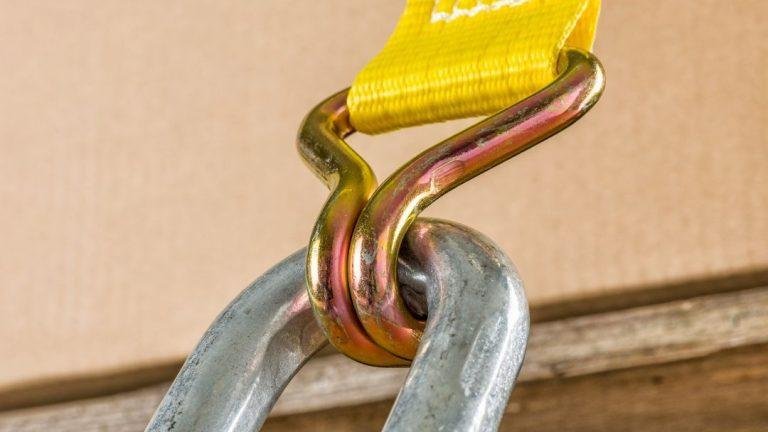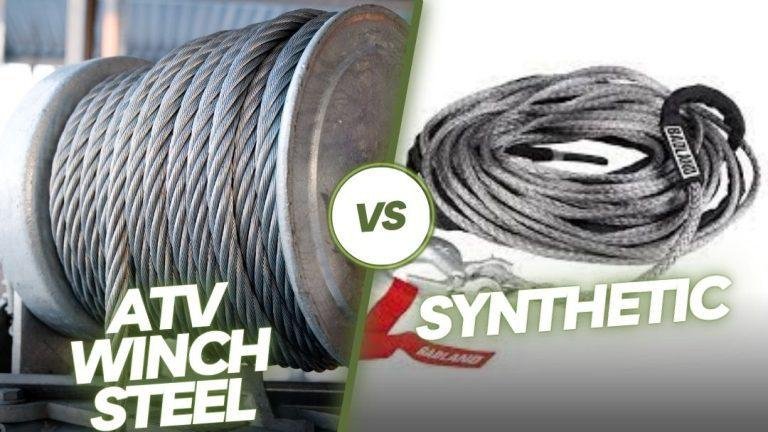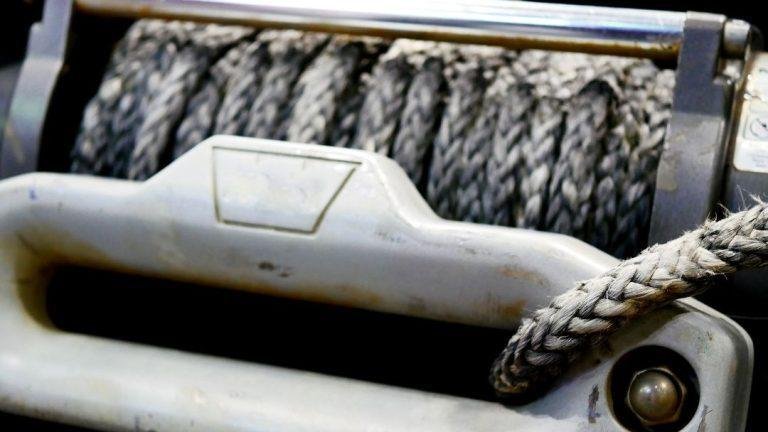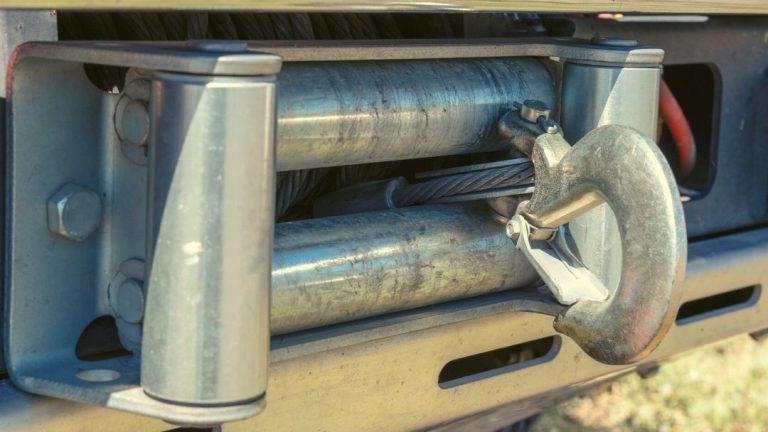The size of a winch cable depends on the weight capacity of the winch. Winch cables come in different sizes to accommodate the weight capacity of the winch.
Choosing the right size winch cable is important to ensure safe and efficient operation. It is crucial to match the weight capacity of the winch to the weight of the load being pulled or lifted. Using a cable that is too small for the winch can put excessive strain on the cable and potentially cause it to fail.
On the other hand, using a cable that is too large for the winch may lead to inefficient operation. Therefore, it is important to consult the manufacturer’s guidelines and consider the weight capacity of the winch when selecting the size of the cable. By doing so, you can ensure optimal performance and safety during winching operations.
Understanding Winch Cables
Choosing the right size winch cable is crucial for efficient towing and recovery. Make sure to consider the weight of the load and the winch’s capacity to select the appropriate cable size.
Winch cables play a crucial role when it comes to using a winch effectively. They are not one-size-fits-all, and understanding the different types, factors to consider, and the significance of cable strength and diameter is essential to make an informed choice.
In this section, we will explore these aspects in detail.
Different Types Of Winch Cables:
- Steel cable:
- Known for its durability and strength, steel cables are commonly used in winches.
- They can withstand abrasive environments and heavy loads, making them suitable for various applications.
- However, steel cables are prone to kinking and are heavier compared to synthetic alternatives.
- Synthetic rope:
- Synthetic ropes are made from materials like high-strength polyethylene, which offers several advantages.
- They are lightweight, making them easier to handle and store.
- Synthetic ropes are also less likely to cause injury if they break, as they don’t have the snapback danger associated with steel cables.
- However, they may not be suitable for extremely heavy loads or harsh environments as they can be prone to damage.
Factors To Consider When Choosing A Winch Cable:
When deciding on the right winch cable, several factors need to be taken into account:
- Load capacity:
- Determine the maximum weight the winch cable needs to handle to ensure safety and efficiency.
- Consider future needs as well, to avoid the hassle of replacing the cable later.
- Length:
- Choose a cable length that suits your specific needs.
- Longer cables allow for more flexibility and usage options, but they may also result in reduced winching capacity.
- Environment:
- Assess the conditions in which the winch cable will be used.
- Consider factors like moisture, temperature, and exposure to chemicals or sharp objects when selecting the appropriate cable material.
- Budget:
- Determine your budget and find the best winch cable that meets your requirements within that range.
- Keep in mind that higher quality cables may be more expensive but can offer better durability and performance in the long run.
The Significance Of Cable Strength And Diameter:
The strength and diameter of a winch cable are vital considerations due to their direct impact on functionality and safety. Here’s why:
- Cable strength:
- The strength of a winch cable determines its load capacity and ability to handle heavy loads without breaking.
- Optimal cable strength ensures reliable winching and minimizes the risk of accidents or damage.
- Cable diameter:
- The diameter of the winch cable affects its flexibility, spooling capacity, and overall performance.
- Thicker cables tend to have higher breaking strengths, but they may require larger winch drums to accommodate them properly.
Understanding these factors will help you make an informed decision when choosing a winch cable that is suitable for your specific needs. Always ensure the cable strength and diameter align with your requirements to ensure safe and efficient winching operations.
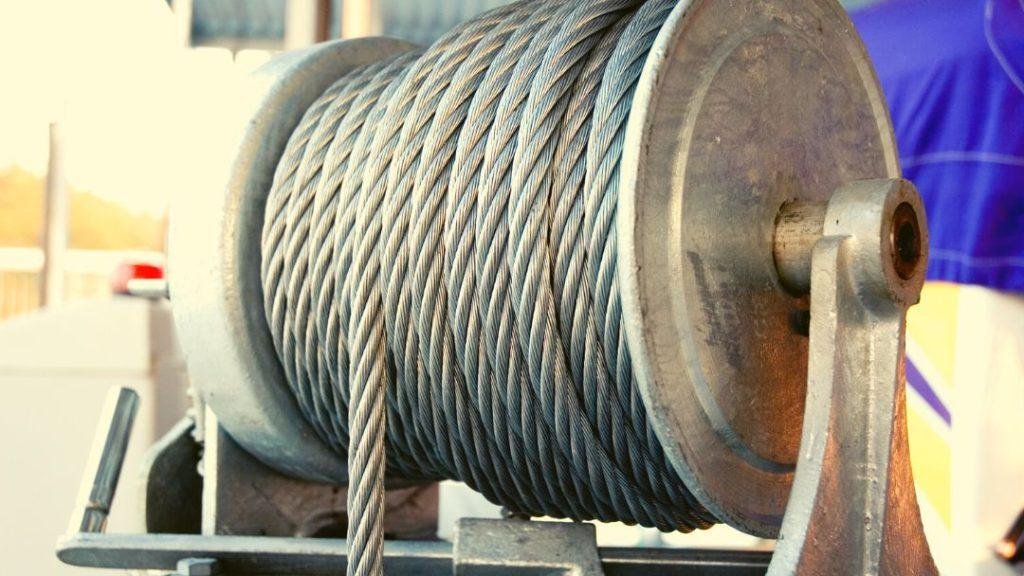
Determining The Strength Of A Winch Cable
Determining the strength of a winch cable involves considering factors like load capacity, wire diameter, and the material used. Choosing the right size winch cable is crucial to ensure safe and efficient towing or lifting operations. Consider the weight of the load and the maximum pull capacity of the winch to determine the appropriate cable size.
Understanding Winch Cable Strength Ratings
Determining the strength of a winch cable is crucial to ensure safe and effective use of your winching equipment. Winch cables come in various sizes and strengths, and understanding their ratings is essential in selecting the right cable for your specific needs.
Let’s delve into the key aspects of winch cable strength ratings:
- Working load limit (wll): The working load limit refers to the maximum load that a winch cable can safely handle during normal use. This rating is determined by the manufacturer and is typically expressed in pounds or kilograms.
- Minimum breaking strength (mbs): The minimum breaking strength represents the maximum load at which the winch cable will break. This rating is a vital consideration to prevent cable failure and potential accidents. Like the wll, the mbs is also measured in pounds or kilograms.
- Safety factor: The safety factor is a ratio that determines the winch cable’s capacity to handle loads beyond its working load limit. It provides a margin of safety for unexpected forces or situations. The industry standard recommends a safety factor of at least 5:1 for winch cables.
Calculating The Required Strength For Your Application
To determine the required strength of a winch cable for your specific application, several factors need consideration:
- Weight of the object: Calculate the weight of the heaviest object you will be moving or lifting with the winch. It is crucial to account for both the operating weight and any additional loads, such as cargo or attachments.
- Friction: Friction plays a significant role in winching operations. Consider the surface, angle of pull, and any potential obstacles that may increase resistance. Overcoming friction requires additional strength to ensure efficient operation.
- Terrain and environmental conditions: Different terrains and environmental conditions can impact the load on the winch cable. For instance, deep mud or steep inclines can create more strain on the cable, requiring a higher strength rating.
- Application type: The nature of your winching application determines the cable strength required. Whether it is off-road recovery, industrial lifting, or recreational use, understanding the demands of your specific application is essential.
Importance Of Overcoming Friction
Efficient winching relies heavily on overcoming friction. When winching, friction between the winch cable and the surface can hinder the pull or lift. It is crucial to consider the following to ensure proper winch cable strength:
- Increased strain: Friction increases the strain on the winch cable, requiring greater strength to overcome resistance and achieve the desired result.
- Preventing damage: If the winch cable is not strong enough to overcome friction, it can lead to excessive wear and damage to the cable, decreasing its lifespan and rendering it ineffective.
- Safety: Overcoming friction ensures safer winching operations, as targeting the appropriate strength prevents cable failure, potential accidents, or injury to bystanders.
Meticulously understanding winch cable strength ratings and accounting for factors such as friction and application requirements is crucial in selecting the right winch cable for your needs. By considering these aspects, you can maximize the effectiveness, safety, and longevity of your winching equipment.
Choosing The Right Diameter For Your Winch Cable
Choosing the right diameter for your winch cable is essential for optimal performance and safety. The size of the winch cable will depend on factors such as the weight of the load, the distance it needs to be pulled, and the capacity of your winch.
Factors To Consider When Selecting Cable Diameter
- The diameter of your winch cable plays a crucial role in its performance and durability. When choosing the right size, it’s essential to consider a few factors:
- Load capacity: The diameter of the cable directly affects its load capacity. Thicker cables can handle heavier loads, while thinner ones are better suited for lighter applications.
- Strength requirement: Consider the amount of strength you’ll need from your winch cable. Thicker cables tend to be stronger and less prone to breaking. However, keep in mind that they may be less flexible.
- Winch drum size: The diameter of the winch drum should also be taken into account. Ensure that the cable thickness matches the drum size for smooth and efficient operation.
- Application: Different winching applications may require different cable diameters. Factors such as the type of terrain, vehicle weight, and the purpose of winching must be considered to select the optimal diameter.
Balancing Strength And Flexibility
Finding the right balance between strength and flexibility is crucial when selecting the diameter of your winch cable. Here are a few important points to keep in mind:
- Thicker cables:
- Offer increased strength and resistance to damage or wear.
- Are more suitable for heavy-duty applications and larger vehicles.
- May reduce the flexibility of the cable, affecting maneuverability.
- Thinner cables:
- Provide enhanced flexibility, making them ideal for complex winching operations.
- Are lighter in weight, making them easier to handle and transport.
- May have a lower load capacity and be more susceptible to damage.
Choosing the right diameter requires considering the specific demands of your winching needs, striking a balance between strength and flexibility.
Common Diameter Options And Their Applications
When it comes to winch cable diameter, there are a few commonly available options. Consider the following diameters and their typical applications:
- 3/16″ (~4.8 mm):
- Suitable for lightweight vehicles and applications with low to moderate load capacity.
- Provides good flexibility and easy handling.
- 7/32″ (~5.6 mm):
- Offers medium strength and flexibility, making it versatile for a range of applications.
- Suitable for both lighter and moderate loads, depending on the cable’s construction.
- 1/4″ (~6.4 mm):
- Provides increased strength, making it better suited for heavier vehicles and demanding applications.
- Offers a good balance between strength and flexibility.
- 5/16″ (~7.9 mm):
- Considered heavy-duty, these cables are designed for larger vehicles and more demanding winching tasks.
- Provide exceptional strength but may sacrifice some flexibility.
Choosing the right winch cable diameter requires evaluating the specific needs of your winching tasks and striking a balance between strength, load capacity, and flexibility.
Maintaining And Caring For Winch Cables
Choosing the right size winch cable is essential for maintaining and caring for your winch. By selecting the appropriate cable size, you can ensure optimal performance and prevent damage to your equipment. Follow these tips to find the proper winch cable size for your needs.
As outdoor enthusiasts, it’s crucial to prioritize the maintenance and care of our winch cables. By doing so, we can ensure their longevity and optimal performance in our off-road adventures. Let’s delve into some essential practices to inspect, clean, prevent, address damage, and handle winch cables properly.
Inspecting And Cleaning The Winch Cable:
Maintaining winch cables involves regular inspections and cleanings to identify any signs of wear or damage before they become major issues. Here are some tips:
- Regular visual inspections: Perform visual inspections before and after each use to identify any fraying, kinks, or other damage. Pay attention to areas near the hook and the drum.
- Checking for loose strands: Gently run your hand along the cable to feel for loose strands or protruding wires. If you detect any, it may be time to replace the cable.
- Cleaning the cable: After each use, clean the cable thoroughly to remove dirt, sand, and debris that may cause abrasion. Use a mild detergent, a soft brush, and water to clean it. Rinse and dry properly before storage.
Preventing And Addressing Cable Damage:
Prevention is key when it comes to winch cable damage. By implementing these practices, you can minimize the chances of cable failure:
- Avoiding overloading: Ensure that you never exceed the maximum load capacity of your winch. Overloading can cause stress and damage to the cable.
- Using a fairlead: A fairlead is a roller or hinged device that guides the cable onto the drum evenly. It reduces the risk of cable pinching, fraying, or abrasion.
- Monitoring cable tension: Maintain proper tension in the cable during use. Loose cable can become tangled or snagged, leading to potential damage.
- Replacing damaged cables: If you notice any significant damage, such as severe fraying, broken wires, or kinks that cannot be straightened, it’s essential to replace the cable immediately.
Proper Storage And Handling Techniques:
Proper storage and handling of winch cables are equally important to maintain their integrity. Follow these guidelines to prolong their lifespan:
- Coil the cable neatly: After each use, carefully coil the cable in a neat and even manner. Avoid kinks or tangles to prevent damage when unwinding.
- Store in a dry environment: Moisture can lead to rust and corrosion, weakening the cable over time. Store your winch cable in a dry environment to maintain its condition.
- Protective sleeve or bag: Consider using a protective sleeve or bag to shield the cable from uv rays, dirt, and other potential hazards when not in use.
- Avoid sharp edges: When handling the cable, ensure that it does not come into contact with sharp edges or abrasive surfaces that may cause damage.
By adhering to these maintenance, care, and handling guidelines, you can ensure the longevity and reliable performance of your winch cable. Remember, investing time and effort in these practices will go a long way in making your off-road adventures safer and more enjoyable.
Ensuring Safety While Using Winch Cables
Ensure safety while using winch cables by choosing the appropriate size for your specific needs. Proper sizing prevents accidents and ensures the efficient operation of your winch.
Safety Considerations During Installation And Use
When it comes to winching operations, safety should always be the top priority. Ensuring that you adhere to proper safety measures during the installation and use of winch cables is essential to prevent accidents and injuries. Here are some important safety considerations to keep in mind:
- Inspect winch cables before each use: Regularly inspect the winch cable, checking for any signs of wear, fraying, or damage. If you notice any issues, replace the cable immediately to avoid potential hazards.
- Choose the right winch cable size: Selecting the appropriate winch cable size is crucial to ensure safe and effective operations. Consider the weight of the loads you plan to pull and choose a winch cable with the appropriate strength and diameter to handle the workload.
- Properly secure the winch cable: Make sure the winch cable is securely attached to both the winch drum and the anchor point. Improper attachment can lead to the cable dislodging or snapping during use, causing accidents and property damage.
- Avoid exceeding the winch cable’s maximum load capacity: Each winch cable has a maximum load capacity specified by the manufacturer. Exceeding this limit can lead to cable failure and accidents. Always check the load capacity and never attempt to pull a load that exceeds it.
Safety Gear And Equipment For Winching Operations
To further enhance safety during winching operations, it’s essential to use the proper safety gear and equipment. Here are the key items you should have:
- Gloves: Wear sturdy gloves to protect your hands from potential injury while handling the winch cable or operating the winch.
- Protective clothing: Use proper protective clothing that covers your arms and legs to minimize the risk of cuts, abrasions, or burns.
- Safety glasses: Wear safety glasses to shield your eyes from any debris or flying objects that may occur during winching.
- Hard hat: Protect your head with a hard hat to reduce the risk of head injuries in case of any accidents or falling objects.
- Durable footwear: Wear steel-toed boots or other sturdy footwear to protect your feet from potential hazards on the work site.
Proper Winching Techniques For Maximum Safety
Using proper winching techniques is crucial for maintaining maximum safety during operations. Here are some important techniques to follow:
- Position the winch and vehicle properly: Ensure that the winch and the vehicle are both properly aligned before starting the winching process. This helps prevent unnecessary strain on the winch cable and ensures smoother operations.
- Maintain a safe distance: Keep a safe distance from the winch cable and the winching area while the operation is in progress. This minimizes the risk of being struck by a loose cable or any sudden movements.
- Apply steady tension: Apply steady tension on the winch cable to avoid sudden jerks or movements that can strain the cable unnecessarily. Smoothly guide the cable onto the winch drum to prevent overlapping or tangling.
- Monitor winch operations: Keep a close eye on the winching process at all times, ensuring proper cable alignment and tension. If you notice any abnormalities, stop the operation immediately and inspect for potential issues.
By following these safety considerations, using proper safety gear, and applying the correct winching techniques, you can ensure maximum safety during winch cable installation and use. Staying vigilant and prioritizing safety will help prevent accidents and ensure successful winching operations.
Troubleshooting Common Winch Cable Issues
Choosing the right size winch cable is crucial for troubleshooting common winch cable issues. Ensure that the cable is strong enough to handle the load and that it is installed properly for optimal performance.
Identifying Common Winch Cable Problems:
- Winch cable fraying: This is a common issue and can be identified by visible frayed strands or wires on the cable. Fraying can occur due to repeated use, heavy loads, or rubbing against rough surfaces.
- Winch cable kinking: Kinks in the cable can be seen as twisted or bent sections. This can happen when the cable is not wound properly or if it gets twisted during operation, affecting its strength and ability to perform effectively.
- Winch cable corrosion: Corrosion on the cable can be identified by rust or discoloration. Exposure to moisture, water, or harsh environmental conditions can cause the cable to corrode, reducing its strength and lifespan.
- Winch cable damage: Look out for any visible signs of cuts, punctures, or other types of damage that can weaken the cable. Damage may occur due to sharp edges, improper handling, or contact with abrasive materials.
Steps To Take When Experiencing Cable Failure:
- Stop winching immediately: If you notice any issues with the winch cable, stop using it to prevent further damage or potential accidents.
- Assess the extent of the problem: Examine the cable carefully to determine the cause and severity of the failure. Identifying the specific issue will help in deciding the appropriate action to take.
- Replace or repair the cable: Depending on the extent of the damage, you may need to either replace the entire cable or repair the damaged sections. Consult the manufacturer’s instructions or seek professional help for guidance.
- Inspect other components: While dealing with cable failure, it’s important to inspect other related components, such as the winch drum and fairlead, to ensure they are in good working condition. Faulty components can contribute to cable failure.
Preventive Measures To Avoid Cable Issues:
- Regular inspection and maintenance: Regularly inspect the winch cable for any signs of wear, damage, or corrosion. Address any issues immediately to prevent them from worsening.
- Proper cable spooling: Always spool the cable properly onto the winch drum, ensuring it is evenly distributed and tightly wound. This reduces the risk of kinks, tangles, and damage during operation.
- Use a cable dampener: When winching, use a cable dampener to absorb the energy in case of cable failure, minimizing the risk of injury or damage.
- Avoid overloading: Adhere to the winch’s weight capacity and avoid overloading it. Exceeding the recommended load can put excessive strain on the cable and lead to failure.
- Protect the cable: Take measures to protect the winch cable from sharp edges, abrasive surfaces, and extreme weather conditions. This can include using protective sleeves or guards, as well as storing the cable properly when not in use.
By following these troubleshooting tips and taking preventive measures, you can minimize winch cable issues, ensuring the safe and efficient operation of your winch system.
Frequently Asked Questions Of What Size Winch Cable
What Size Of Cable Is Most At Winches?
The size of cable used with winches depends on the specific winch and its intended use. Different winches may require different cable sizes based on their capacity and the load they will be pulling. Generally, winches can accommodate cables ranging from 1/4 inch to 1 inch in diameter.
Smaller winches typically use thinner cables, while larger winches may require thicker cables to handle heavier loads. It is essential to consult the winch manufacturer’s recommendations or specifications to determine the appropriate cable size for a particular winch. By following the manufacturer’s guidelines, you can ensure the safe and efficient operation of the winch and minimize the risk of cable failure or damage during use.
What Size Cable On A 12000 Lb Warn Winch?
The recommended cable size for a 12000 lb warn winch is 3/8 inches. This size ensures optimal performance and safety during winching operations. The 3/8-inch cable provides the necessary strength and durability to handle the weight and stress exerted on the winch.
It is crucial to use the proper cable size to prevent damage to the winch and to ensure smooth and efficient operation. Incorrect cable size can lead to cable slippage, equipment failure, and accidents. Therefore, it is vital to follow the manufacturer’s recommendations and guidelines when selecting the cable size for your 12000 lb warn winch.
How Strong Of A Winch Cable Do I Need?
To determine the strength of your winch cable, consider the weight of the objects you plan to tow. The cable should have a minimum strength equal to or slightly higher than the maximum weight you expect to pull. This ensures the cable can handle the load without snapping or breaking.
Avoid underestimating the weight, as it can lead to safety hazards and damage to your equipment. Be aware that winch cable strength is typically measured in pounds, so ensure you have the necessary information about the objects you will be pulling before making a decision.
By choosing the appropriate strength, you can ensure smooth operations and reduce the risk of accidents.
What Is The Rating Of A 3 8 Winch Cable?
A 3 8 winch cable is typically rated by its diameter, often expressed in millimeters or inches. The specific rating of a 3 8 winch cable can vary depending on the manufacturer and the intended use. The rating is usually determined by factors such as the material used in the cable construction, its strength, and its load-bearing capacity.
It is important to consult the manufacturer’s specifications or guidelines to determine the exact rating of a 3 8 winch cable.
Conclusion
Selecting the correct winch cable size is crucial for ensuring the safe and efficient operation of your winch. The diameter and length of the cable should be determined based on the weight of the load you typically handle. A thicker cable is ideal for heavier loads, as it can withstand higher levels of force without snapping or becoming damaged.
Conversely, a thinner cable may be suitable for lighter loads, as it is more flexible and easier to handle. It is also important to regularly inspect and maintain your winch cable to identify any signs of wear or damage, such as fraying or kinking, which could compromise its strength and reliability.
By taking these factors into consideration and choosing the appropriate winch cable size, you can ensure the smooth and safe operation of your winch in various lifting and pulling applications.


